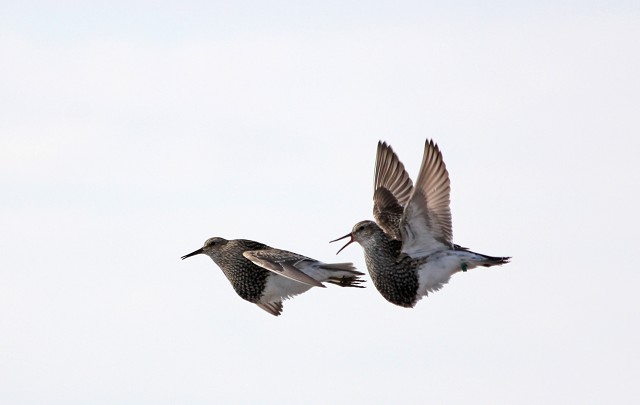Male Pectoral Sandpipers have been recorded travelling as far as 8,000 miles in just a single summer month in order to have sex with as many females as possible.
The extraordinary findings, published this week in Nature, discovered that males were recorded visiting as many as 24 different potential breeding sites on the Alaskan tundra within a single season, flying an average of 110 miles between each mating attempt.
The average male covered some 1,900 miles, further than flying from Paris to Moscow, but one particularly promiscuous individual was recorded flying 8,100 miles (13,045 km) in just four weeks. This feat is conducted shortly after they make the already-arduous journey from their wintering grounds in South America.
Pectoral Sandpipers are polygynous, and those males which settle down in a single spot have little chance of copulation. The data backs that up: the results suggest that males do not have a final breeding destination after their northbound migration in spring, instead making nomadic movements across the Arctic.
These nomadic movements allow males to display and sire offspring at multiple sites within a single breeding season — indeed the most successful of the 120 radio-tagged sandpipers sired 22 offspring with six different females. Tenure (the duration of stay at a single site) correlated strongly with the number of breeding females at the site, suggesting that decisions to leave are dependent on local mating opportunities.

Displaying Pectoral Sandpipers in June 2012 (Katharina Kapetanopoulos, Max Planck Institute for Ornithology)
This is an astonishing display of stamina, and further confirmation that shorebirds are among the most able of all fliers. The Max Planck Institute for Ornithology explained in a statement: "Males have to reduce their sleep and defend and court females virtually non-stop throughout the endless Arctic summer days to successfully reproduce."
Bart Kempenaers, who co-authored the study, commented: "Before we made this discovery, it was thought that birds (males and females) migrate from their wintering area to a single site, where they breed in that year."
"We think that they have developed the strategy to assess their local chances, and if they are not good, they just move on to the next place."
Read more on this subject in this article by Bart Kempenaers.
Reference


